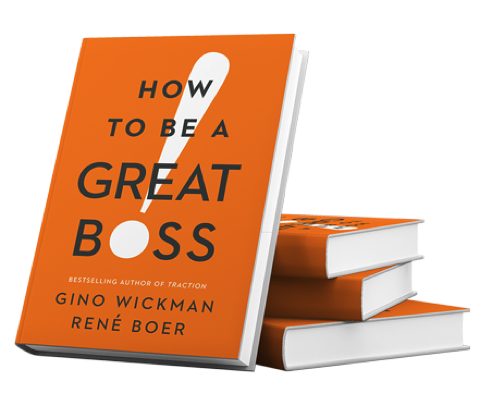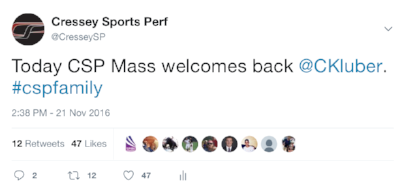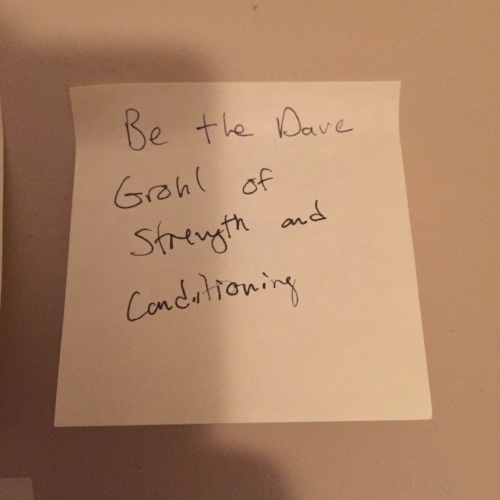I've kicked up my reading habits in 2018, resulting in a whole bunch of newly highlighted concepts and ideas. Here's a look at three quick hitters that recently caught my eye, and how they apply to running our gym here in Massachusetts:
1. From the Book Traction, by Gino Wickman
"Your hiring success ratio will increase if you evaluate applicants' core values before their skill."
I have a confession to make: Off the top of my head, I couldn't tell you what college my employee John O'Neil attended. Honestly...no idea.
When John's name was first thrown into our candidate pool, my first reaction was not to pull up his resume or cover letter. Instead, I connected with the people who coached alongside him as he interned at our Florida facility in 2014. I sent text messages to mutual friends in the fitness industry to get their take on John. And I focused on connecting with people who could speak to his character.
Universally, the responses looked like this:
- "He's a great person."
- "He's as loyal a guy as you'll ever find."
- "No one outworked him during his time with us."
You notice that none of these responses mentioned John's undergraduate GPA or the names of his high-profile clients at recent jobs?
It didn't take long to recognize that we were considering a candidate who was even better known for his integrity and work ethic than for his skill-set (which is exceptional, by the way). We hired John for his core values first, and it is working out just fine for us.
2. From The Book Crushing It, by Gary Vaynerchuk
"An entrepreneur's lust needs to be counterbalanced with a manager's prudence and discipline."
This quote reminded me of the lesson in The E-Myth that in order for your business to survive, you need to cover the roles of the manager, the entrepreneur, and the technician. All too often I see gym co-founders go into business sharing two of the components outlined here, and completely miss the boat on the third. If you're considering going into business with a friend or a colleague, make sure to ask yourself if you've covered all three bases.
Thankfully, my business partner Eric and I touch on all three, conveniently overlapping on the "entrepreneur" piece. We have had more than one occasion in the past where Eric's "entrepreneurial lust" was counterbalanced by my tendency to say we should pump the breaks.
Thankfully, both pieces are important. Without his creativity, we likely never would have made the strides we did, but it was also my prudence that probably kept us from stretching ourselves a little thin with too many objectives.
3. From the Book Hug Your Customers, by Jack Mitchell
"Training is for dogs. Education is for people."
We're constantly modifying our approach to delivering a valuable internship experience here at Cressey Sports Performance, and have made some big changes in the past month as we prepare for our summer interns. Instead of thinking of our internship as a program meant to cultivate our next hire, we're embracing the mentality that we are a talent supplier for the industry as a whole.
Our objective is to churn out exceptional coaches, so our internship program needs to be more about experiential learning and structured education than it is about properly executing our singular business model. Interns who are being educated instead of trained to be cogs in a system will reflect better upon our brand when they move on, and still prove to be employable here at CSP should we choose to go that route.





























